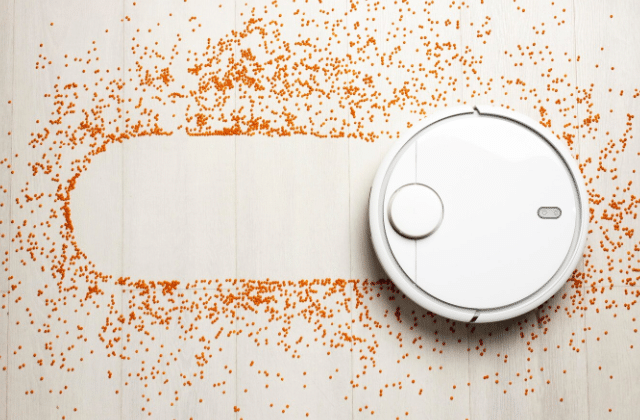
Modern homes often feature multiple flooring types – hardwood in living areas, plush carpets in bedrooms, and tile in kitchens. This variety creates a cleaning challenge, as each surface requires different care. Hardwood floors need gentle yet effective cleaning to avoid scratches, while carpets demand powerful suction to lift embedded dirt. Traditional vacuums force you to constantly adjust settings or even switch machines entirely. A truly versatile robot vacuum solves this problem by automatically adapting to different floor types, providing optimal cleaning across your entire home.
Key Features for Multi-Floor Cleaning Performance
Adjustable Suction Power for Different Surfaces
The hallmark of an effective all-floor robot vacuum is its ability to modify suction power based on the surface it’s cleaning. When transitioning from hardwood to carpet, the vacuum should automatically increase suction to pull dirt from deeper fibers. Many advanced models offer multiple power settings that can be programmed or automatically selected. This adaptability ensures delicate floors aren’t damaged by excessive suction while still providing thorough cleaning where needed. Some units even allow you to set different suction levels for specific rooms through their companion apps, giving you complete control over your cleaning preferences.
Auto-Detection Technology for Floor Type Recognition
Modern robot vacuums use sophisticated sensors to detect floor type changes instantly. These systems combine pressure sensors, optical scanners, and sometimes even sound wave analysis to determine whether they’re on hard flooring or carpet. The best models make these adjustments seamlessly, without pausing or requiring manual input. This technology goes beyond simple surface detection – some can identify high-pile versus low-pile carpets and adjust accordingly. The result is a cleaning experience that feels thoughtfully customized to each area of your home, with no wasted energy or missed spots due to incorrect settings.
Hardwood Floors: Gentle Yet Effective Cleaning
The hardwood floor cleaning requires special consideration to maintain the surface’s beauty while removing dust and debris. An ideal robot vacuum for hardwood uses soft rubber brushes that won’t scratch the finish, combined with just enough suction to pick up particles without scattering them. Many models now include specialized hardwood modes that reduce suction slightly to prevent small area rugs from being disturbed during cleaning. The best units for hardwood also feature precise edge cleaning capabilities, ensuring baseboards and corners receive proper attention. Look for models with anti-scratch wheels and a low-profile design that can glide under furniture without risking damage to your floors or the vacuum itself.
Carpets & Rugs: Deep Cleaning Capabilities
While hardwood floors need gentle care, carpets demand powerful performance to extract dirt from their fibers. A quality all-floor robot vacuum should at least double its suction power when detecting carpeted areas. The best models include motorized brush rolls specifically designed to agitate and lift stubborn debris from carpet piles. Some advanced units even offer a “deep clean” mode that makes multiple passes over high-traffic carpeted areas. For homes with thick rugs or shag carpets, look for models that can automatically increase their height to prevent getting stuck. The combination of strong suction, effective brush design, and intelligent navigation ensures your carpets receive the thorough cleaning they need between professional deep cleanings.
Tile & Vinyl Floors: Handling Grout and Edges
Tile and vinyl floors present unique cleaning challenges, particularly in grout lines and edges where dirt accumulates. An effective robot vacuum for these surfaces needs a combination of side brushes that can sweep debris from corners and a main brush that won’t push dirt into grout lines. Many models now include mopping capabilities specifically designed for tile floors, using precisely controlled water flow to clean without oversaturating. The vacuum should be able to detect and focus on high-traffic areas where more dirt accumulates, adjusting its cleaning pattern accordingly. For vinyl floors, which can be sensitive to moisture, look for models that allow you to disable mopping features while still providing excellent dry cleaning performance.
Transition Handling: Moving Between Floor Types
Automatic Surface Detection & Setting Adjustments
The true test of an all-floor robot vacuum comes when it encounters transitions between different surfaces. High-quality models detect these changes instantly, adjusting both suction power and brush speed within seconds. Some use a combination of downward-facing sensors and software algorithms to anticipate transitions before they occur, resulting in smoother operation. The best units maintain consistent cleaning performance regardless of how many surface changes they encounter during a single cleaning session, ensuring no area gets neglected due to technical limitations.
Overcoming Thresholds & Raised Edges
Homes often have slight elevation changes between rooms or at doorway thresholds that can challenge robot vacuums. Effective models feature enhanced climbing abilities, typically handling transitions up to 3/4 inch without difficulty. The vacuum’s wheels should have sufficient traction to navigate these obstacles without getting stuck or scratching flooring surfaces. Some advanced models can even detect when they’re struggling with a particular transition and will attempt it from different angles or with adjusted speed to complete the crossing successfully.
Smart Mapping for Multi-Floor Homes
For homes with multiple stories or varied flooring layouts, smart mapping technology is essential. The best robot vacuums create detailed floor plans that remember which surfaces are in which rooms, allowing for customized cleaning approaches. These maps enable features like selective room cleaning, no-go zones for delicate rugs, and automatic adjustment of cleaning modes when moving between predefined areas. Some models can store multiple floor plans, making them ideal for multi-level homes where you might want different cleaning approaches for basement concrete, main floor hardwood, and upstairs carpeting.
Conclusion
Finding a robot vacuum that excels on all floor types requires careful consideration of several key features. Look for models with automatic suction adjustment, intelligent surface detection, and specialized brush designs that can handle everything from delicate hardwood floor cleaning to deep carpet cleaning. For those seeking top-tier performance, eufy’s cleaning products stand out with their exceptional quality and powerful functionality, offering solutions for even the most challenging multi-surface cleaning situations. By choosing a robot vacuum with these capabilities, you’ll enjoy consistently clean floors throughout your home with minimal effort, regardless of how varied your flooring may be.




